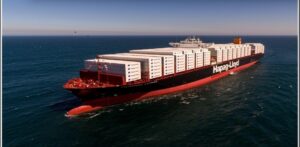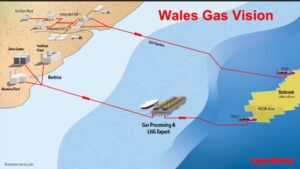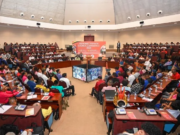By Kiana Wilburg
Berbice has always been a central part of Guyana’s agricultural history. Its soils have supported the rise of the sugar industry since the 1970s and rice continues to grow there in abundance. The government has assured that this ancient county will continue to play a major role in the nation’s drive to achieve food security. But the plans for this region, representing approximately 140,000 citizens, extend well beyond food production.
Just last week, President, Dr. Irfaan Ali visited Region Six and informed residents of two major projects on the horizon—a deepwater port and an artificial intelligence (AI) data centre. According to the Head of State, discussions are ongoing with Betchel, an international company, to build a deepwater facility in that region.
Another port facility is also on the horizon for Berbice. It will be developed by local shipping giants, Muneshwers and John Fernandes and cost approximately US$285 million. Make no mistake, this is a critical project that will, as the president said, create 1000 jobs.
For decades, industry stakeholders have complained about the fact that larger ships cannot dock at our existing ports given the shallow draught. In the interim, large vessels go to regional ports and smaller vessels bring those items that are destined for Guyana.
Once the deepwater port, along with the other envisioned by the local shipping group is realized, both would allow for Panamax vessels to dock here, thereby making Guyana a transhipment port and reducing freight costs for stakeholders.
Regarding the AI centre, the president did not reveal much about this venture. Be that as it may, it is important to note that this idea was also raised by Head of ExxonMobil Guyana, Alistair Routledge earlier this year at the Guyana Energy Conference & Supply Chain Expo. There, Routledge noted that the country has enough gas resources to contemplate a phase two version of the imminent gas-to-energy project. Just like its sister, the second phase would deliver 300MW of power, paving the way for landmark initiatives which include a data centre, a fertilizer plant as well as an alumina plant in Berbice.
Provided that all goes according to plan, the deepwater port and the AI driven data centre, would all represent “firsts” for Guyana. But this is not all that is on the cards for this agri-driven county. Readers would recall that the governments of Guyana and Suriname are committed to deepening relations between the two CARICOM states, hence the advancement of the new Corentyne River Bridge which carries a US$236 million price tag.
Guyanese authorities have also announced that they will develop a municipal airport, one similar to Ogle’s, given the development boom that is taking place.
Home ownership is also being prioritised. In fact, authorities recently disclosed that over 2,200 house lots were allocated in Region Six alone since 2020. A total of 10,000 houselots will also be distributed in three years in Moleson Creek as part of a broader strategy to transform the area into an economic hub. There is also the ongoing development at Palmyra, East Coast Berbice which includes the construction of over 700 houses, each reportedly costing $14 million.
On the education front, authorities had announced late last year that Guyana will serve as ExxonMobil’s global hub for developing skills related to floating production, storage, and offloading (FPSO) vessels. This followed the commissioning of the US$13 million FPSO facility simulator, FacTor, in 2024 at the Guyana Technical Training College Institute (GTTCI) in Port Mourant, Berbice. The simulator represents the first phase of GTTCI, a collaborative project involving the Government of Guyana and stakeholders from the Stabroek Block, including ExxonMobil Guyana, Hess Corporation, and CNOOC.
Complementing this, it was announced by the Head of State that his government will be investing in the University of Guyana (UG) Tain Campus in Region Six to expand academic offerings. The investments will allow the campus to provide programmes in medical sciences, pharmacy, dentistry, engineering, law and oil and gas.
The One Guyana Digital School will also be launched in Region Six (East Berbice-Corentyne) before May, as confirmed by President Ali last week. Notably, this initiative seeks to integrate technology into the education system to enhance learning opportunities for students across the country.
Construction is also on the rise in Berbice. Last week, 293 small contractors were awarded contracts to enhance road networks across communities. Of the 239 contractors, more than 150 are first-time awardees. The individual contracts awarded are fixed-rate projects costing $15 million or less.
The highly anticipated National Stadium at Palmyra, East Coast Berbice is likely to be completed and available for use before the end of this year. Meanwhile, the tender process has begun to build a new Berbice River Bridge.
Can you imagine that all of this is in the pipeline in under five years? Berbice is not undergoing a mere face-lift. Multiple growth poles are being developed by channeling key aspects of the oil and gas ecosystem beyond the corridors of an already saturated city.
In the next 15 to 20 years, Berbice, on this current trajectory, will not be as “country-side” as we remember it today. A fresh, modern take on Berbice is being built today.











